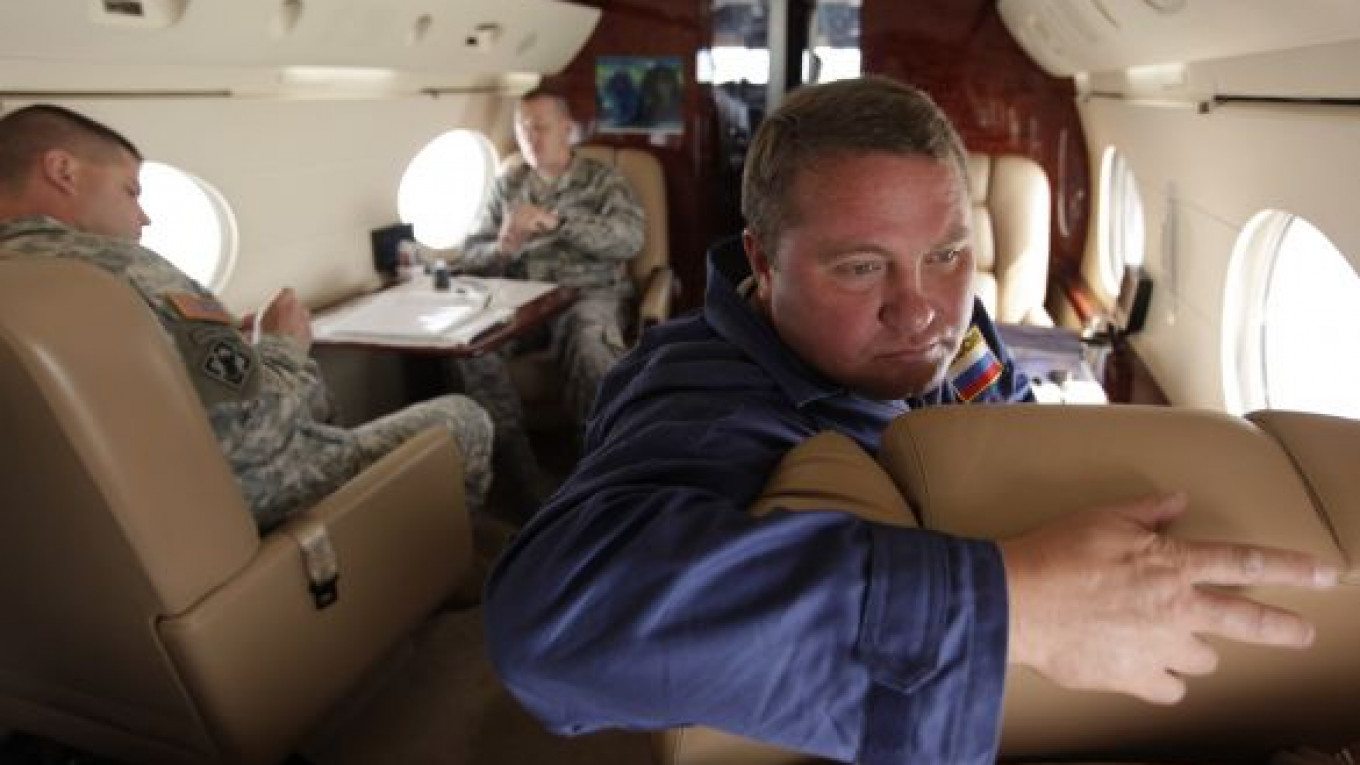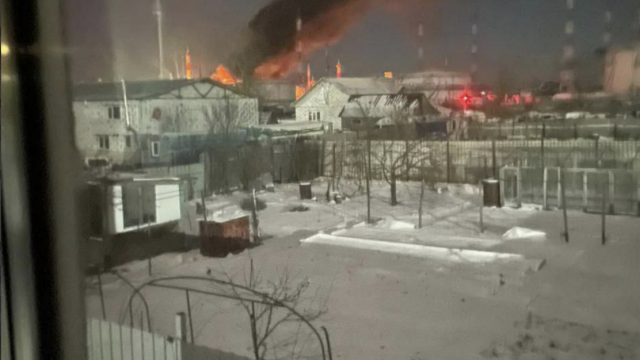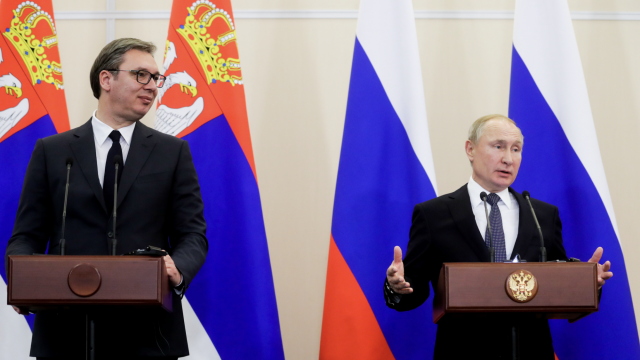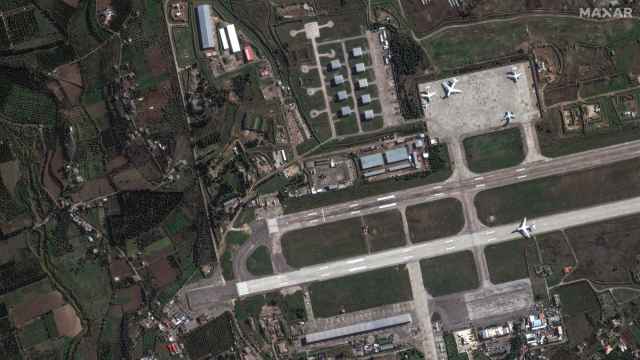OVER THE PACIFIC — A Gulfstream passenger jet at the center of a U.S.-Russian military exercise was about to cross the International Dateline on Tuesday for the second time in three days, and some of the seven passengers seemed dulled by the dash across the Pacific and back.
But they all perked up and the mood turned jovial when Air Force Technical Sergeant Paul Shoop called out, "They're here!"
Two Su-27 fighter jets had come into view behind the chartered Gulfstream and were closing in fast. The Gulfstream was playing the role of a hijacked airliner crossing Russian airspace on its way east across the Pacific, and the fighters had been sent aloft to track it.
It was part of a precedent-setting exercise called Vigilant Eagle to see how well Russia and the North American Aerospace Defense Command, or NORAD, once bitter Cold War enemies, could coordinate in an international hijacking.
The Gulfstream took off from Alaska on Sunday, sent a mock distress signal indicating that it had been "hijacked" and then flew west across the Pacific, pursued first by fighters from NORAD — a joint U.S.-Canadian command — and then by fighters from Russia.
On Tuesday, the pursuit was in the opposite direction as the plane headed back to Alaska.
The Gulfstream, code-named Fencing 1220, carried U.S., Canadian and Russian officers.
As the Su-27s drew near, the passengers raised their cameras to the Gulfstream's windows, taking stills and video. One of the Russian pilots appeared to be pointing his own camera or binoculars back at them.
Greg Locke, the Gulfstream's maintenance director who was aboard for the exercise, fired off a string of photos with his automated camera and then played out an imaginary conversation between the pilot and his wife.
"What did you do today, Honey?" he asked. "I shadowed a [Gulfstream] G-4 with a bunch of Americans pointing cameras out the windows."
The fighters were so close that the pilots' orange flight suits and white helmets were clearly visible under the cockpit canopies. One waved.
One Su-27 banked toward the Gulfstream, dropped slightly and swooped underneath, emerging on the other side.
A steady chatter in Russian and English poured out of Fencing 1220's radio speakers.
"My Russian's not very good, but it sounded like he said, 'I could take that right wing off with about a five-second burst of a cannon,'" pilot Ben Rhodes quipped, to laughter in the cabin.
All the planes were unarmed, a condition of the exercise, said Canadian Forces Colonel Todd Balfe, the NORAD observer aboard the Gulfstream.
"It's just unbelievable that we're able to fly [in] formation at 33,000 feet [10,000 meters] with a pair of Russian fighter jets," Rhodes said. "It's pretty amazing to me. I love it."
Rhodes, who has logged more than 15,000 hours of flying time over 40 years, said he has seen a Russian-built fighter up close only once before, when he was flying near Cuba.
"That was a little more hostile," he said with a chuckle. "So at least this time my heart's not racing because I know that this is part of a script."
Asked to describe the incident over Cuba, Rhodes cleared his throat and paused. "That's kind of classified," he said with a laugh.
Details of Vigilant Eagle were carefully scripted, including some of the radio communications, but Fencing 1220 co-pilot Daniel Moore had to ad-lib when a Russian air traffic controller asked, "How many hijackers are on board, and what are their demands?"
"That's not on the script anywhere," Moore said, so he replied, "We have two hijackers, and they want to go to Anchorage."
Moore said he did not think the Russian controller believed that the hijacking was the real thing instead of a drill.
"Maybe that's on his checklist; that's one of the things he has to ask," he said.
Terrorists have repeatedly targeted the United States and Russia, sometimes with tragic and catastrophic results, and both nations are looking for ways to steel their transportation systems against attack. Vigilant Eagle was the first-ever international hijacking drill, NORAD said.
It also showed how far the former Cold War enemies have come. Despite continued suspicions and disputes, they embarked on a complex exercise requiring close cooperation and communication.
About 3 1/2 hours into Tuesday's flight, the Su-27s banked steeply and flew away, and Russian military controllers handed off responsibility for Fencing 1220 to NORAD.
Three hours later, two NORAD F-22 fighters barreled past in the distance from the opposite direction, banked so steeply that they seemed to turn on their wing tips and then pulled in close on either side of Fencing 1220.
Like the Russian fighters, they edged in close, and the pilots could be seen turning their heads toward the Gulfstream, the setting sun glinting off their helmets.
The F-22s pulled away as the Gulfstream descended through clouds and landed at a rainy Ted Stevens Anchorage International Airport in Anchorage, Alaska.
Balfe, the NORAD observer on Fencing 1220, said the handoff on Tuesday went smoothly, as it had on Sunday.
"It reinforces the success [of the first handoff], but it also proves the point that it can occur from the U.S. side to the Russian side and now from the Russian side to the U.S. side," he said. "So the two-way communication flow has been proven to be successful."
A full review is planned next month, but Balfe said the exercise has already helped make civilian airline travel safer from terrorist attack.
"I think any time that we increase our cooperation and our coordination, we harden ourselves against further events," Balfe said.
A Message from The Moscow Times:
Dear readers,
We are facing unprecedented challenges. Russia's Prosecutor General's Office has designated The Moscow Times as an "undesirable" organization, criminalizing our work and putting our staff at risk of prosecution. This follows our earlier unjust labeling as a "foreign agent."
These actions are direct attempts to silence independent journalism in Russia. The authorities claim our work "discredits the decisions of the Russian leadership." We see things differently: we strive to provide accurate, unbiased reporting on Russia.
We, the journalists of The Moscow Times, refuse to be silenced. But to continue our work, we need your help.
Your support, no matter how small, makes a world of difference. If you can, please support us monthly starting from just $2. It's quick to set up, and every contribution makes a significant impact.
By supporting The Moscow Times, you're defending open, independent journalism in the face of repression. Thank you for standing with us.
Remind me later.






